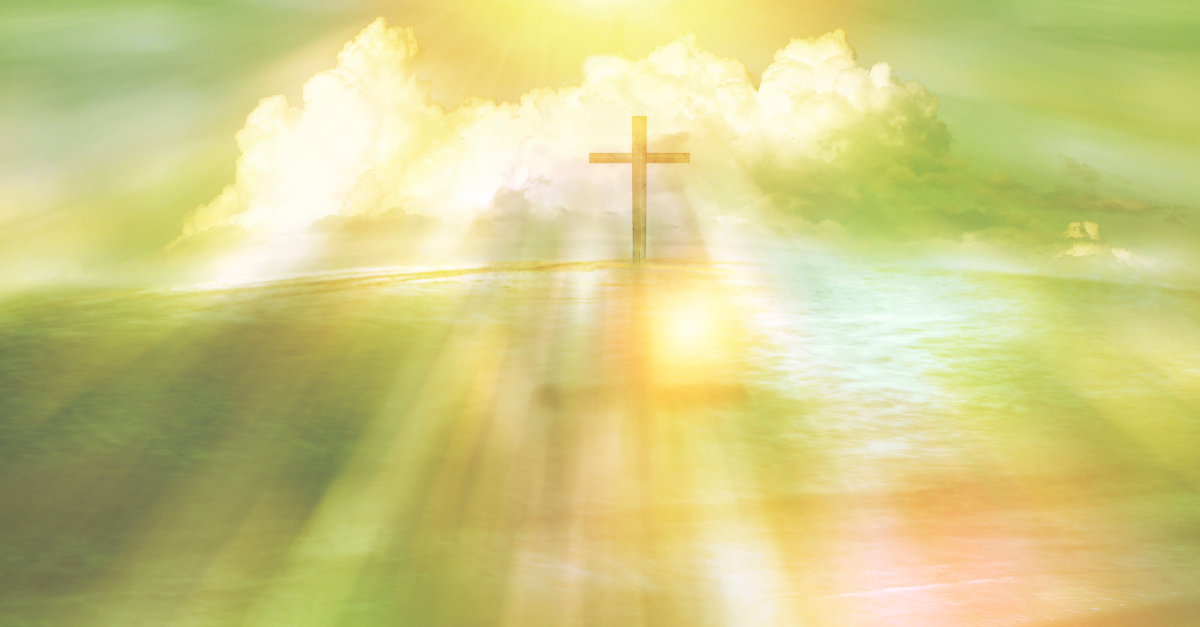Where Was Jesus Baptized?

The Baptism of Jesus Christ, described in all four Gospels, took place in the Jordan River, just a few miles north of the Dead Sea and roughly six miles east of Jericho.
Not only did Jesus’ baptism serve as a fulfillment of Old Testament prophecy and a confirmation of his divinity as the Son of God, the baptism of Jesus is generally seen as the beginning of Christ’s public ministry.
Where Is the Jordan River?
The Jordan River (Ha-Yarden in Hebrew) is an important geographical feature in the Middle East and key location in the history of Israel and the Bible.
Today, the nearly 156 miles of the Jordan River flow southward from Mount Hermon, located on the border of modern-day Syria and Lebanon, and drain into the Sea of Galilee in northern Israel.
The Sea of Galilee, sometimes referred to as Lake Gennesaret (Luke 5:1) or Sea of Tiberius (John 6:1, John 21:1) is only about a day’s walk from Nazareth, the town where Jesus grew up (Matthew 2:19-23). It was also a key location in the ministry of Jesus (Matthew 4:13-22, Mark 4:1-34, Matthew 13:2, Matthew 5-7) and the setting for some of his greatest miracles (Mark 5:21-43, Luke 8:22-25, Luke 9:10-17, John 6:16-21)
Once exiting the Sea of Galilee, the Jordan River winds through the Judean countryside, fed by two major tributaries, the Yarmouk and Jabbok (Genesis 32:22) to the east, until it eventually connects with the Dead Sea, where it ends. Prior to reaching the Dead Sea, the Jordan River creates a geographical border between Israel’s West Bank and present-day Jordan to the west.
All of these waterways are located in Jordan’s Rift Valley, a massive geological fissure that forms one of the longest cracks and lowest natural depressions on earth. In fact, the Dead Sea, or Salt Sea as it is sometimes referred to, sits at 1,300 feet below sea level, the lowest point on earth.
The Jordan River itself, with its lush, sandy shores and steep, rocky banks, is fairly narrow and easy to cross in most places, though the current can be swift and even dangerous in some areas. Beyond the main river flow, however, shallow pools and smaller tributaries are common in the Jordan.
It's probable that John the Baptist baptized Jesus and others in one of these shallow pools or inlets on the eastern side of the river.

Where Was Jesus Baptized in the Jordan River?
All four gospels describe Jesus’ baptism taking place on the banks of the Jordan River at the hands of John the Baptist, his cousin (Matthew 3, Mark 1:1-11, Luke 3:1-21, John 1:6-34)
It’s difficult to know the exact location of Jesus’ baptism. However, archeological evidence, historical writings, and the gospel accounts point to an area on the southern half of the Jordan River, about five and a half miles north of the Dead Sea and a little more than six miles southeast of the city of Jericho.
John, who had been called to fulfill Old Testament prophecy as “the voice of one crying in the wilderness, ‘make straight the way of the Lord,’” (Isaiah 40:3; Matthew 1:3; John 1:23) had retreated into the wilderness of Judea (east of the Jordan River) to “preach a baptism of repentance for the forgiveness of sins” (Mark 1:4).
It was there, somewhere in between A.D. 26-29, that John the Baptist began his public ministry, baptizing people in the Jordan River at a place described in John’s gospel as “Bethany beyond the Jordan” (John 1:28).
Different from the village of Bethany, where Jesus often visited siblings Mary, Martha, and their brother Lazarus (Luke 10:38-42; John 11:1-41), Bethany beyond the Jordan, sometimes referred to as Bethabara, was most likely a small town on the eastern banks of the Jordan River in what is now present-day Jordan.
Strategically, this would have been an effective place for John the Baptist to minister as it would have seen a high volume of traffic from travelers coming from the Judean wilderness, Judea hill country, Jerusalem, and Jericho.
At Bethany beyond the Jordan, John the Baptist preached a message of repentance and confession of sin, symbolized by water baptism, but in doing so, he also directed his listeners to expect the arrival of the coming messiah promising, “after me comes the one more powerful than I, the straps of whose sandals I am not worthy to stoop down and untie. I baptize you with water, but he will baptize you with the Holy Spirit” (Mark 1:7-8).
In line with Old Testament prophecy and John’s promise, here, Jesus arrived from Galilee to be baptized by John (Matthew 3:13; Mark 1:9).
And as soon as Jesus was baptized, he went up out of the water. At that moment heaven was opened, and he saw the Spirit of God descending like a dove and alighting on him. And a voice from heaven said, ‘This is my Son, whom I love; with him I am well pleased.’ – Matthew 3:16-17
Jesus would have been roughly 30 years old at the time of his baptism.
In fact, Jesus would later return to this same Bethany to momentarily escape from the threats of the Pharisees in Jerusalem (John 10:40-42). The apostle John writes:
...there he stayed, and many people came to him. They said, ‘Though John (the Baptist) never performed a sign, all that John said about this man was true.’ And in that place many believed in Jesus. – John 10:40-42
Today, Al-Maghtas, meaning “baptism” or “immersion” in Arabic, is the most probable location of John the Baptist’s ministry and Jesus’ baptism, though many in present-day Israel argue that Qasr el Yahud on the western banks is the actual site. We probably can’t know for certain, though the debate over which side of the river is where Jesus was actually baptized may have more to do with the two nations (Israel and Jordan) trying to attract tourism than anything.
Most evidence, however, points to the eastern side, the Jordanian side, being the actual site of Bethany beyond the Jordan, John’s ministry, and Jesus’ baptism.

Where Else Is the Jordan River Mentioned in the Bible?
The Baptism of Jesus is not the only noteworthy biblical event to feature the Jordan River. In fact, the Jordan River is a major setting for two major Old Testament stories.
After 40 years of wandering in the wilderness as punishment for failing to trust in the Lord following the Exodus from Egypt, the next generation of Israelites were finally instructed by God to enter the Promised Land. When the time came, God directed Joshua to lead the people across the Jordan River, with the priest carrying the Ark of the Covenant ahead of the caravan. When the priests stepped into the river, and stood in place, the Jordan immediately parted for the people to cross through on dry land (Joshua 3). Once across, the Israelites began the conquest of Canaan that followed.
After the miraculous crossing, Joshua took 12 stones from banks of the river and placed them in the middle of the river where the priests had stood to mark the place where God had intervened and once again use his miraculous power in Israel’s favor (Joshua 4:1-9).
Years later, the prophet Elijah and his protégé Elisha retreated to the banks of the Jordan River, using the river as a natural barrier of protection against threats from Israel’s king. At the river, Elijah took his coat and struck the waters, which soon parted for them to cross. Once safe on the eastern side, Elijah was taken up into heaven in a whirlwind and chariot of fire (2 Kings 2:11).
With a double portion of Elijah’s spirit and coat in hand, Elisha struck the waters of the Jordan River to return to the western banks and begin his own ministry (2 Kings 2:12-14).
Throughout Scripture, the crossing of the Jordan River became symbolic of God’s miraculous power, the confirmation of His favor, fulfillment of promise, and the beginning of public ministry.
It is worth noting that both Old Testament river crossings, mentioned above, took place at a similar location on the Jordan River, east of Jericho and a few miles north of the Dead Sea, very close to where John would later minister, and Jesus would later be baptized.
So in many ways, this specific location on the Jordan River had both symbolic and strategic significance—of which John the Baptist would have been well aware.
Photo Credit: ©Getty Images/Christopher-Sprake

This article is part of our larger resource library of Christian questions important to the Christian faith. From core beliefs to what the Bible says about angels, we want to provide easy to read and understand articles that answer your questions about Christian living.
What Do Christians Believe?
Is Gambling a Sin?
Is Drinking Alcohol a Sin?
What Does God Look Like?
Are Guardian Angels Real?
What is Heaven Like?
Originally published November 02, 2020.





